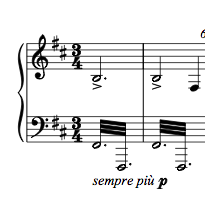TYPE DESIGN INFORMATION PAGE last updated on Wed Dec 17 04:22:17 EST 2025
FONT RECOGNITION VIA FONT MOOSE
|
|
|
|
Werner J. Wolff
Musician Werner J. Wolff founded Notengrafik Berlin / Wolff & Okrzeja GbR in 2001, and runs it together with Andrew Okrzeja. The company specializes in contemporary music and offers engraving and related digital services to opera houses, music publishers and composers throughout Europe. Speaker at ATypI 2013 in Amsterdam. The abstract of his talk in Amsterdam, entitled Making Notes: The Art of Musical Print Punctus contra punctum Typography in music notation Counterpoint has been a predominant compositional principle in music for centuries. In this talk I will expand about music notation, from the first examples of printed music in the 15th century to the latest computer software, showing the development of tools and techniques used in the evolution of musical type. The printing of musical scores has always been a unique craft, one which is much more involved than the printing of text. For that reason, it has taken another 50 years or so after Gutenberg's invention, before the Venetian music printers were able to set professional standards. In the 18th century, the Leipzig-based typographer Breitkopf (creator of Breitkopf-Fraktur) refined the use of movable type by breaking down all musical symbols into their smallest components. However, this technique was still incapable of fulfilling the needs of composers and professional musicians. Plate engraving, both on copper and on pewter, was explored for that purpose, but again it was type that eventually took the lead. In the 1730s, John Walsh in London was able to establish a technique used for almost 250 years thereafter: most of the elements created in music engraving are not drawn but punched (The Greek tupos also means punch) into the metal plate. During the second half of the 20th century various type-based methods, like Letraset and stencils, were explored, until digital music typesetting became standard. Although nowadays fewer than twenty music-fonts are used professionally, there is still a demand for the development of new glyphs. Some 1000 symbols are known, yet the vast majority of them are rarely used. For contemporary music, as well as for music from the pre-printing era, these are still not enough. |
EXTERNAL LINKS |
| | |

file name: Notengrafik Example
| | |
|
Luc Devroye ⦿ School of Computer Science ⦿ McGill University Montreal, Canada H3A 2K6 ⦿ lucdevroye@gmail.com ⦿ https://luc.devroye.org ⦿ https://luc.devroye.org/fonts.html |

